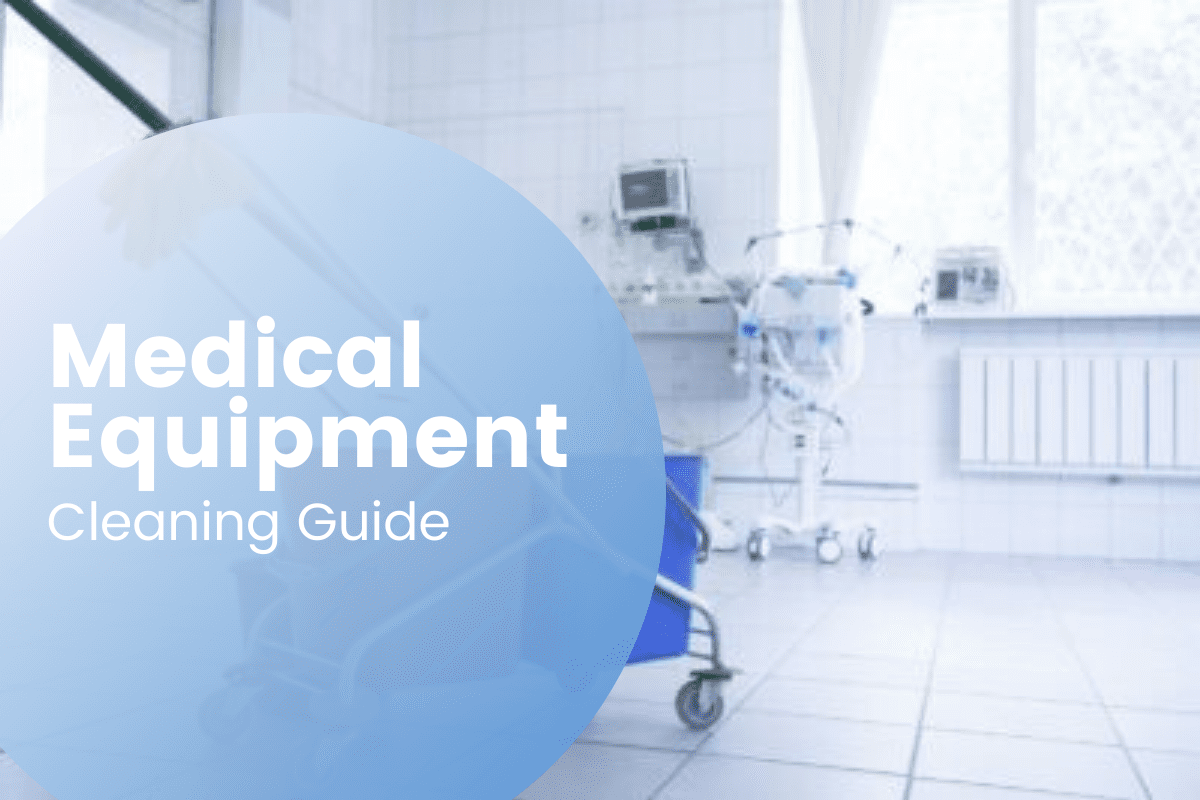
Cleaning and sanitization is extremely important in order to prevent the spread of viruses and bacteria within hospitals and other facilities.
Healthcare-associated infections, or “HAIs” are a serious threat in the industry for doctors, nurses, patients, and other healthcare workers expose themselves to this danger everyday. The best way to prevent HAIs is through sound sanitization protocols and cleaning methods.
Proper disinfection is also very crucial in ambulatory care and home settings, which are becoming a more common type of treatment especially since the coronavirus pandemic hit. Many patients who are cared for in this type of setting are immunocompromised or have communicable diseases meaning that sanitization is very important. The home setting is generally much safer than the hospitals because there are not as many patients in the same area, meaning that there are not as many transmittable diseases either. However, it is still crucial to keep any area disinfected where care is given to protect everyone in the setting.
According the CDC, surfaces are considered noncritical items because they usually only come into contact with intact skin, meaning that they’re typically not an immediate threat for causing infections.
However, surfaces are further broken into housekeeping surfaces and medical equipment surfaces, which have similar recommended protocols and disinfectant agents, but vary in the frequency in which they should be cleaned.
There are several reasons why you should use a disinfectant on noncritical surfaces, five of which are highlighted by the CDC:
- Hospital floors become contaminated by microorganisms from airborne bacteria, contact with dirty shoes, wheels and other equipment. In order to properly clean these floors, the use of a disinfectant is necessary. If you try to just use soap and water to mop the floors it will be much less effective than a recommended phenolic disinfectant.
- Detergents become contaminated and can lead to spreading bacteria across the floor and facility. In fact, when using soap and water the mop water becomes more dirty the more you use it and leads to contamination. Using a disinfectant can prevent this unnecessary contamination from occurring.
- The CDC recommends that any noncritical equipment that is contaminated with blood, bodily fluids, secretions, or excretions should be cleaned and sanitized immediately after use. Bodily fluids can easily contaminate surfaces and spread diseases if they are from a patient infected with a infectious disease.
- I addition to the CDC, OSHA requires that surfaces contaminated with blood or other potentially infections materials be disinfected before put into use again.
- It can be hard to keep track of lots of various cleaning materials and disinfectant agents, which is why using a single product throughout a facility can simplify training and the regular practice of cleaning.
Although it may be easier to use a single disinfectant for all types of equipment in a hospital, is it really the best way to prevent the spread of infections? Let’s take a look at some common materials used in the healthcare industry and the proper ways to sanitize them.
Stainless Steel
Stainless steel is one of the most common materials used in the healthcare industry and is used for a variety of equipment and tools. There’s a good reason for its prevalence in the industry and that is because it is very easy to disinfect and has its own antimicrobial properties. However, in order for your stainless to do its job effectively, it still has to be disinfected properly with a good product. Typically it’s not recommended to use bleach on stainless but rather use a disinfectant such as Lysol, and to rinse afterwards with clean water to ensure the metal’s integrity. For more information on how to properly sanitize stainless steel check out this blog!
Aluminum
Aluminum is another very common metal that is found in healthcare facilities. Although it doesn’t have as many inherit antimicrobial properties as stainless steel, aluminum is still a very good material to use for various medical equipment. When disinfecting aluminum it’s important to use a PH-neutral disinfectant rather than bleach, vinegar-based solutions, or acidic-based solutions. These types of disinfectant are effective at getting rid of germs and bacteria, but over time they can start to corrode and damage the metal.
Plastic
Typically, the types of plastic used in healthcare facilities can stand up to harsher disinfectants than metal, and there are a variety of ways to sanitize them. Bleach is usually ok to use with plastic and does a very good job of disinfecting the equipment, as long as it is thoroughly washed off afterwards to prevent anyone coming into direct contact with the solution. Check out the product information from the manufacturer for more details on how to sanitize your specific plastic equipment.
Laundry and other Fabrics
Just like every household, every healthcare facility has to deal with dirty laundry. Laundry that is potentially contaminated can spread diseases and bacteria unless it is properly transported and cleaned. The best way to sanitize laundry is to make sure that it is safely transported in an enclosed space such as an Adjustable Folding Linen Hamper, and then brought to the washing machines for full cleaning.
Additionally, whenever cleaning, sterilizing, or disinfecting any type of material, proper PPE should be worn at all times. This prevents the spread of infectious diseases to not only other patients and staff, but also the person in charge of the actual cleaning process.
Hospitals are ripe with germs and bacteria which is why implementing effective disinfection protocols is so important in these areas. For more information on how to clean your equipment, or if you’re curious on what other types of solutions Lakeside has to help prevent HAI’s and the spread of germs in healthcare facilities, get in touch with us!
